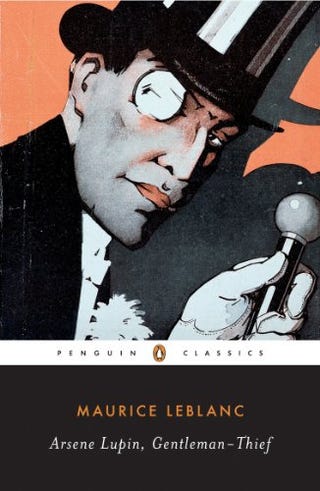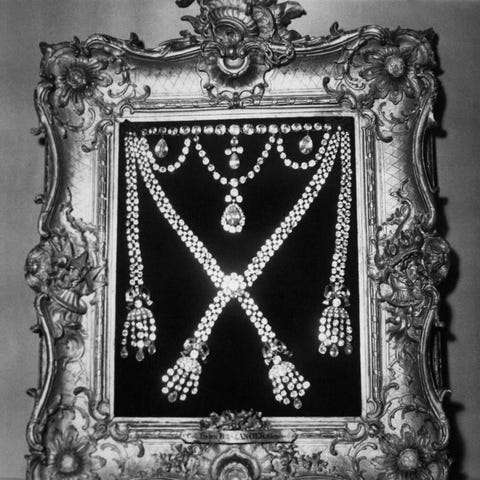Lupin, Netflix’s French-language detective series about a novel series of the same name, is also based on a novel series of the same name; it’s a show containing the book the show itself is depicting. (Let’s call it “detective metafiction.”) Metafiction aside, Lupin will no doubt draw comparisons to the BBC’s Sherlock series. Both are detective fiction transplanted from the early 20th century into contemporary Europe. Both chronicle episodic exploits of morally-dubious men—both geniuses, both ahead in life yet somehow depicted as underdogs. Both unravel in often chronologically confusing ways. Both shows will, likely, have frustratingly long gaps between seasons.
Lupin follows Arsène Lupin, a “gentleman burglar” and master of disguises—something of a Moriarty on a very effective dosage of anti-psychotic medication. He’s suave. He’s confident. He makes few mistakes. And, in a series containing seemingly historically real objects—including a necklace apparently worn by Marie Antoinette—as well as semi-plausible art thefts, Lupin appears closer to reality than his sleuthing British contemporary.
But how much does Lupin really draw from history? Is he real? Is the story real, or just fiction containing fiction and based on fiction?
This content is imported from YouTube. You may be able to find the same content in another format, or you may be able to find more information, at their web site.
Is Lupin based on a true story?
Explicitly, no. The Arsène Lupin short story and novel series penned by French writer Maurice Leblanc spans more than 20 books, containing fictional narratives of sometimes fantastical elements, such as elixir's of life and magic stones. However, the Netflix series doesn’t doesn’t appear totally faithful to its literary source material, selecting stories here and there to augment the contemporary storyline.
And there are some historical elements. Art thievery at the Louvre is not an uncommon event (there were attempts as recent as last October). Leonardo da Vinci's Mona Lisa was stolen from the museum and then later recovered in the early 20th century (around the time of the Lupin book series.)
So while the Netflix series doesn't have in mind any specific real-life thief, it does take inspiration from some real life thievery, including one very important object for the series' plot: a necklace.
Marie Antoinette’s necklace
One of the most plausibly real parts of the series is its central object: the necklace Lupin steals in the series pilot. Reportedly worn by Marie Antoinette, the item was briefly on display at the Louvre before auction when Lupin buys and then steals it.
The necklace seems to be based on a real (roughly $15 million) diamond necklace gifted to Marie Antoinette. The necklace caused a similar scandal in the eighteenth century as it did on Lupin, with a buyer planning to sell off individual diamonds and the whole affair leading to scandal and, some suggest, the eventual execution of Antoinette.
The necklace is still missing and its diamonds likely scattered. Though it was never displayed or auctioned at the Louvre, a reconstruction of the necklace was exhibited in Versailles.
This content is created and maintained by a third party, and imported onto this page to help users provide their email addresses. You may be able to find more information about this and similar content at piano.io
"story" - Google News
January 12, 2021 at 02:02AM
https://ift.tt/3buXLRO
Is Lupin Based on a True Story and Was Marie Antoinette's Necklace Stolen in Real Life? - menshealth.com
"story" - Google News
https://ift.tt/2YrOfIK
https://ift.tt/2xwebYA
Bagikan Berita Ini


















0 Response to "Is Lupin Based on a True Story and Was Marie Antoinette's Necklace Stolen in Real Life? - menshealth.com"
Post a Comment